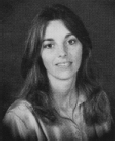From the Dust Jacket:
“IN THE BEST INTERESTS OF THE ADOPTEE.” This is the reason given for sealing adoption records and withholding all information about birthparents, even when that information is requested by an adult adoptee. Is this wall of silence always the best policy? Millions of adoptees and a growing number of birthparents think not. The desire to know about ourselves is very strong—our heritage, where we came from; and, although no court has yet found good enough reason to unseal records, the medical need-to-know is sometimes a matter of life and death. As a result, many adoptees on their own are actively tracking the information. And
Search is the first handbook written expressly for adoptees and birthparents showing them how to:
• set guidelines for a search
• get organized
• use the reference resources of libraries, government, and genealogical records
• use birth, marriage, divorce, death, school, church, military, property, and other official records
• get effective results from newspaper and magazine ads
• keep accurate records
• write letters to agencies
• make out a budget for this undertaking
• enlist outside assistance
• hire someone to do the search
• go to court
Author Jayne Askin, herself an adoptee who sought and found her birthfamily, explores the fundamental question of whether one should begin such a search. She considers how the search affects the searcher, what can be expected from family and friends, how to deal with the feelings of adoptive parents, how and where to look for support, how to face possible rejection at the end of the search, and how the right to privacy of the person sought balances against the searchers need to know.
In addition to identifying adoptee support groups that can be helpful to the searcher, Search contains a state-by-state compilation of laws governing inheritance and the sealing and opening of records; it provides addresses of state information departments, state agencies that handle adoption/relinquishment, courts of jurisdiction empowered to handle these matters, and offices where records are held.
About the Author:
Jayne Askin
was born April 25, 1940, in Memphis, Tennessee. She was relinquished several days later, and placed in the care of the Tennessee Children’s Home Society. When she was officially adopted on December 10, 1940, the circumstances of her birth and pertinent medical information were sealed by the court, at which time her “official” life began.
At the age of 35, no longer able to ignore or pretend that there were no influences from her birthfamily on her life, she felt strongly that she had a right to learn what traits she might have inherited—to know who she was. Her search began with an innocence she now finds hard to believe. But after encountering frustration, discrimination, and many closed doors, she finally designed a workable plan that led her to her birthfamily. She knows her medical history, that she is of Irish and Scottish heritage, that she has six half siblings, and that there is longevity in both sides of her family. Her search has brought her closer to her adoptive parents. She has not met her birthparents and does not feel the need to, but she has spoken with them and heard the details of her relinquishment. In Search: A Handbook for Adoptees and Birthparents, Jayne Askin shares her method of research in seeking the facts of her birth, the problems and fears that searchers face, and her heartfelt belief in “the right to know.”
Molly Davis,
a San Francisco-based freelance writer, has written for numerous national publications. Ms. Davis is also currently a public relations consultant for several Bay Area companies. She specializes in promotional literature, marketing strategies, and media relations. Ms. Davis earned a Bachelor of Arts in English literature from the University of California, Santa Barbara in 1988.
Compiler’s Note:
Detailed descriptions of both Geborener Deutscher and KinQuest BBS, based upon information provided by the Complier to the Author upon her request at the time, are included under “Search Resources and Services” in the Second Edition.





































